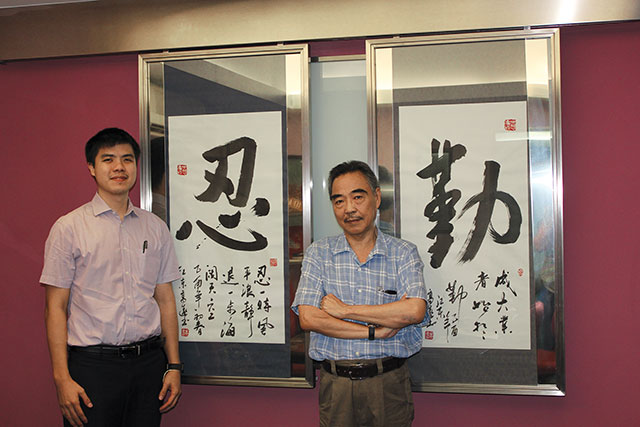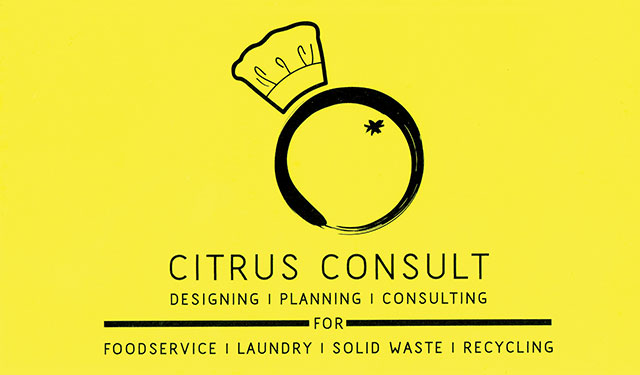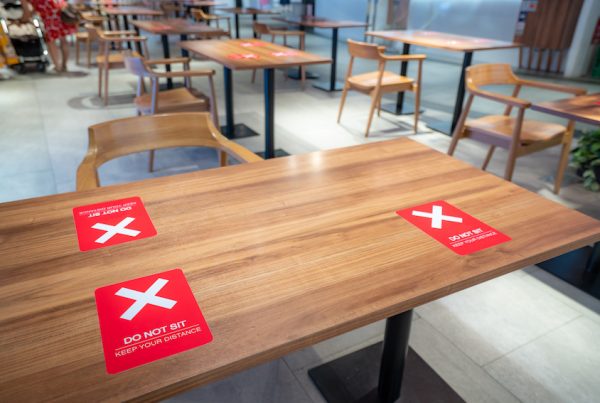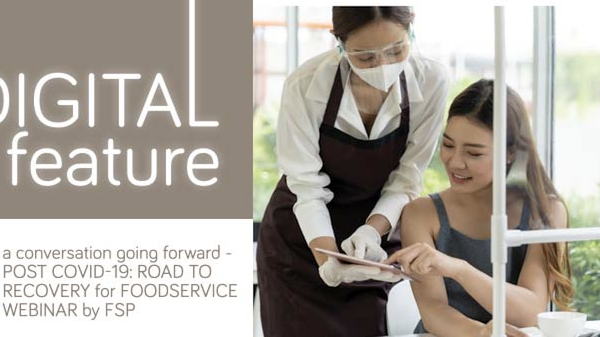
“This quaint café is helmed by a group of friends pursuing their F&B dreams amidst their 9-to-5 drill in the corporate world”. Or “after years in banking, the 30-something year old decided to channel his resources into running a restaurant”. Some examples you might come across in food-related media channels, definitely auguring well for the industry as conventions are challenged with youthful enthusiasm opening up a world of palates for diners.
Like his peers, Brandon Kua (pictured on left) was also “soul searching” as he said and stumbled into foodservice and while working for a consultant, he found an interest to be in this side of the industry. Together with Sidney Ng who he considers a mentor, both gentlemen are grounded by the Chinese characters that read “patience” (left) and “hardworking”. We asked Brandon what it is like to be on the other side in comparison to many people his age who are owners of foodservice establishments. Or as one of the younger ones in the field, which he opines that age is not a limiting factor and quipped, “the saying of ‘don’t try to reinvent the wheel’, while it has its validity, one should not be bounded by it as it kills creativity and innovation”. Both gentlemen will bring to the table their individual ideas and Brandon says that, “sometimes I have wacky ideas that I will propose and Sidney says it will not work, but my question will be, why not? If it is valid and technically it does not help out in operations or in the design then I will drop it”. For Sidney, he has seen how the industry has progressed through the decades and he recalls how difficult it was for him to get people to accept equipment back in the 1970s. Based on his experience, he was kind enough to share some points he has observed that can be avoided in order to set up a stellar commercial kitchen.
KNOW WHAT YOU NEED
It may seem great to have every equipment in the kitchen but will each of them be fully utilised? Adding larger capacity equipment is a good problem to have but he cautions against hinging on empty optimism and buying what you do not need for the moment. Unless a kitchen is doing many things such as baking and cooking where manufacturers would be distinct in their offerings, Sidney prefers not purchasing equipment from too many different brands because spare parts can turn out to be a sticky affair after the warranty period is over. He believes in the power of reputation and tries to tell clients that the high initial cost of getting equipment from a globally recognised brand translates to greater productivity and better service to avoid lengthy downtimes.
LOOK OUT FOR WHAT IS NOT VISIBLE
Indeed, the physical space in laying out a kitchen is important because it affects the workflow and mobility but one should also be on top of the little things. Citing high-rise kitchens, he said that aside from ventilation and exhaust, the gas supply is often overlooked. Due to the height and gravity, it will take a long time for gas to reach the top therefore it’s important to assess if the facility can support such kitchens or otherwise. Even wiring ought to be paid attention as manufacturer and user country may differ in specifications; one must take into account the kilowatts to be able to do the correct configuration.
WORK ENVIRONMENT
Luminosity in the workspace should be bright enough at all preparation, cooking, storage and washing areas. Next is ventilation that is vital for clean and breathable air and Sidney recommends an Electrostatic Precipitator (ESP) or known as ‘air scrubber’. The ESP is highly efficient in filtering fine particles like dust and smoke using the force of an induced electrostatic charge. More costly than regular ventilation, it provides a better environment to work in and pays off in the long run. Acoustics in the kitchen must be well-controlled therefore air lock doors are installed to control noise as well as aromas from reaching the service area.
CULTURAL DIFFERENCES
Both the East and West understand differently when it comes to using equipment. European chefs are comfortable with block concepts that separate between Oriental cooking and Western cooking but Malaysians are still rather conservative and prefer equipment to be lined up straight.
NOT FOLLOWING A TEMPLATE
Even if you are a chain restaurant where menu and standard operating procedure is the same worldwide, the layout would differ because architecture of your space and even regulations of where you operate might affect the final outcome. Therefore Sidney says it is impossible to “cut and paste” if ever an aspiring business owner thinks of taking the easier route into food business. Brandon tells us it has been an interesting learning curve when he meets chefs, architects, technicians, manufacturers and owners as they all have individual concerns about a kitchen and these helps him to propose a plan. With this core principles and living up to the zesty flavours of citrus-y items, Citrus Consult seeks to bring a bright new angle on the foodservice and hotelier scene through practical kitchen designs.

CITRUS CONSULT SERVICES
Foodservice System Development & Design • Design & Build Solution • Laundry System Design Solid and Liquid Waste Management Design • Operational & Development Planning
CITRUS CONSULT SDN. BHD.
No. 19, Jalan Metro Perdana Barat 9, Sri Edaran Industrial Park, Kepong, 52100 Kuala Lumpur, Malaysia.
T: +603 6251 0080 • F: +603 6251 6044
www.citrusconsult.com.my










